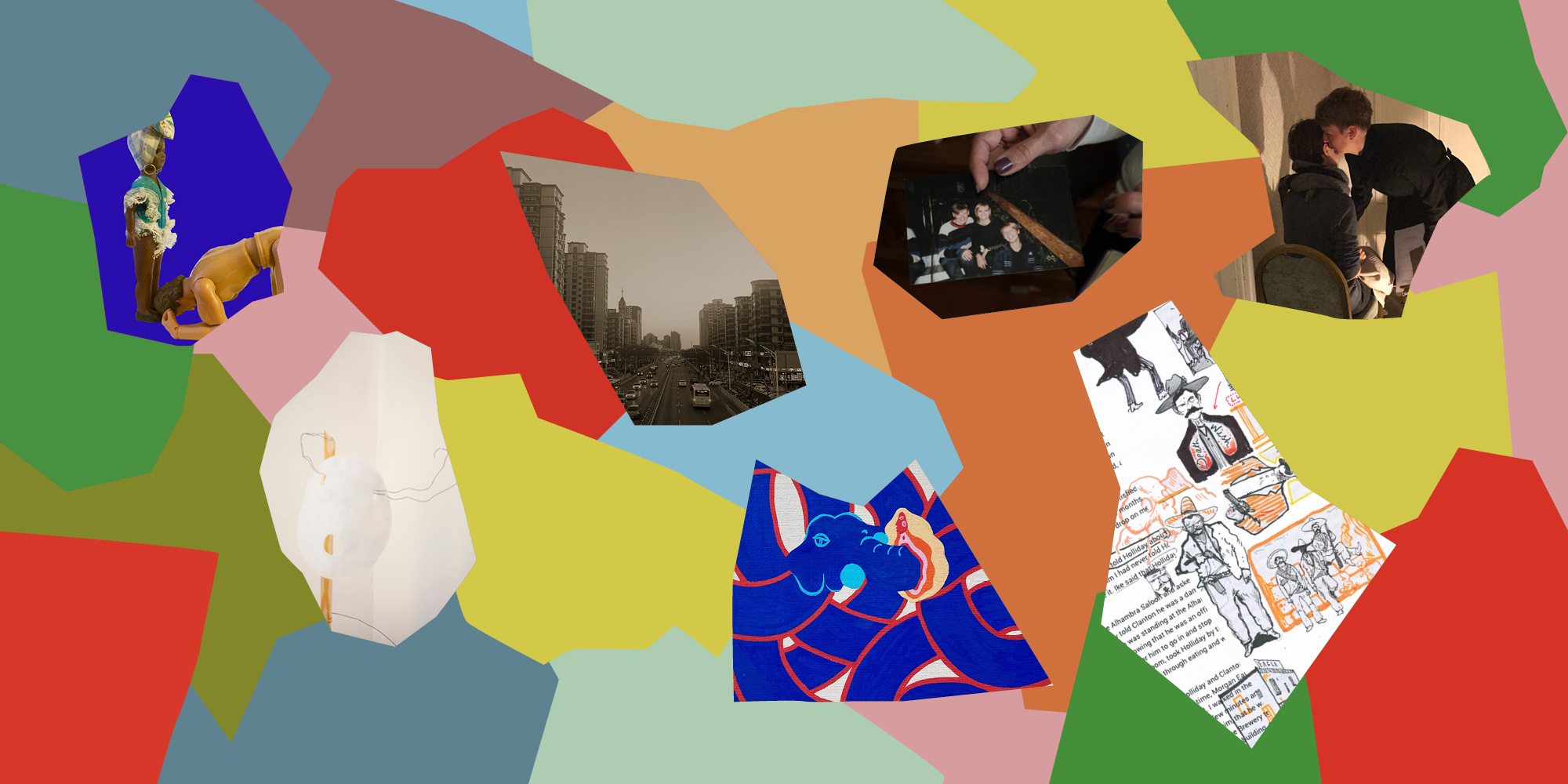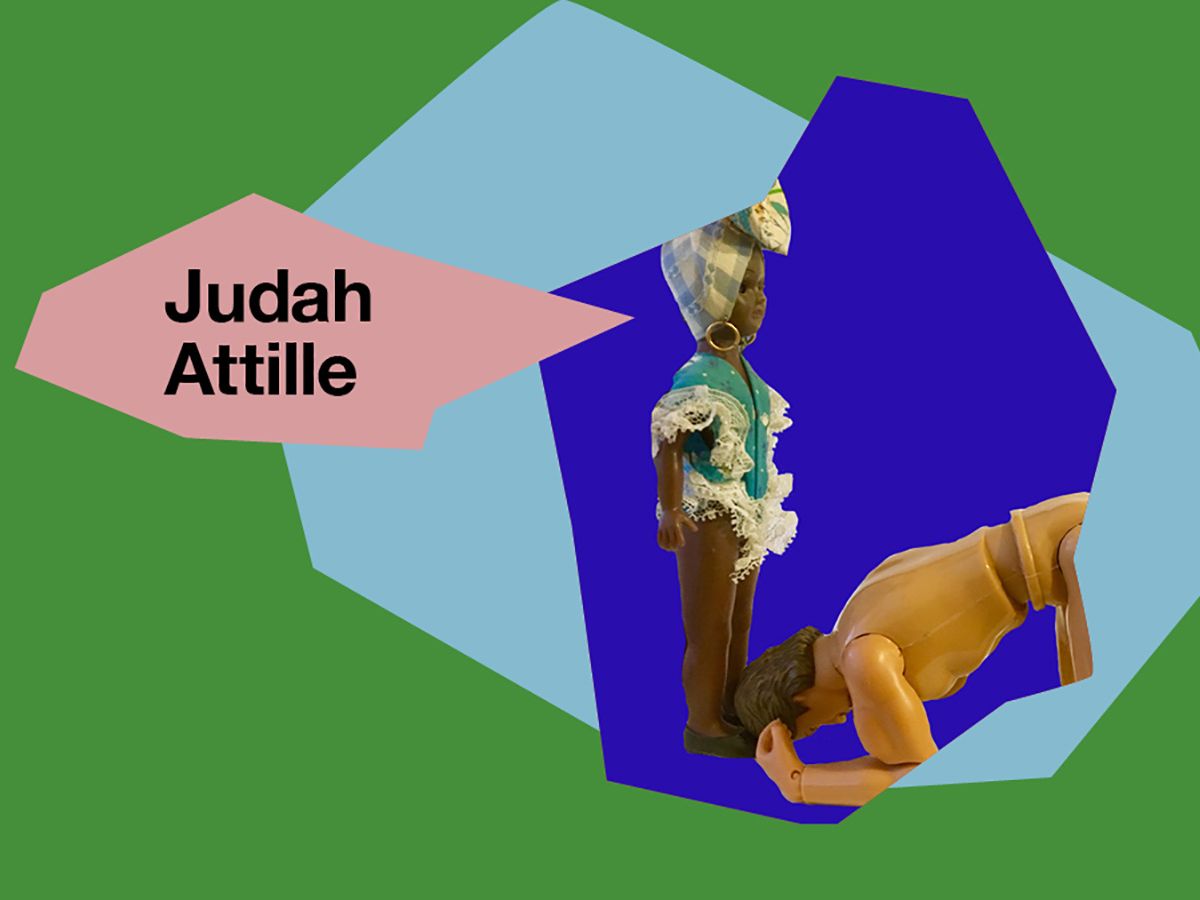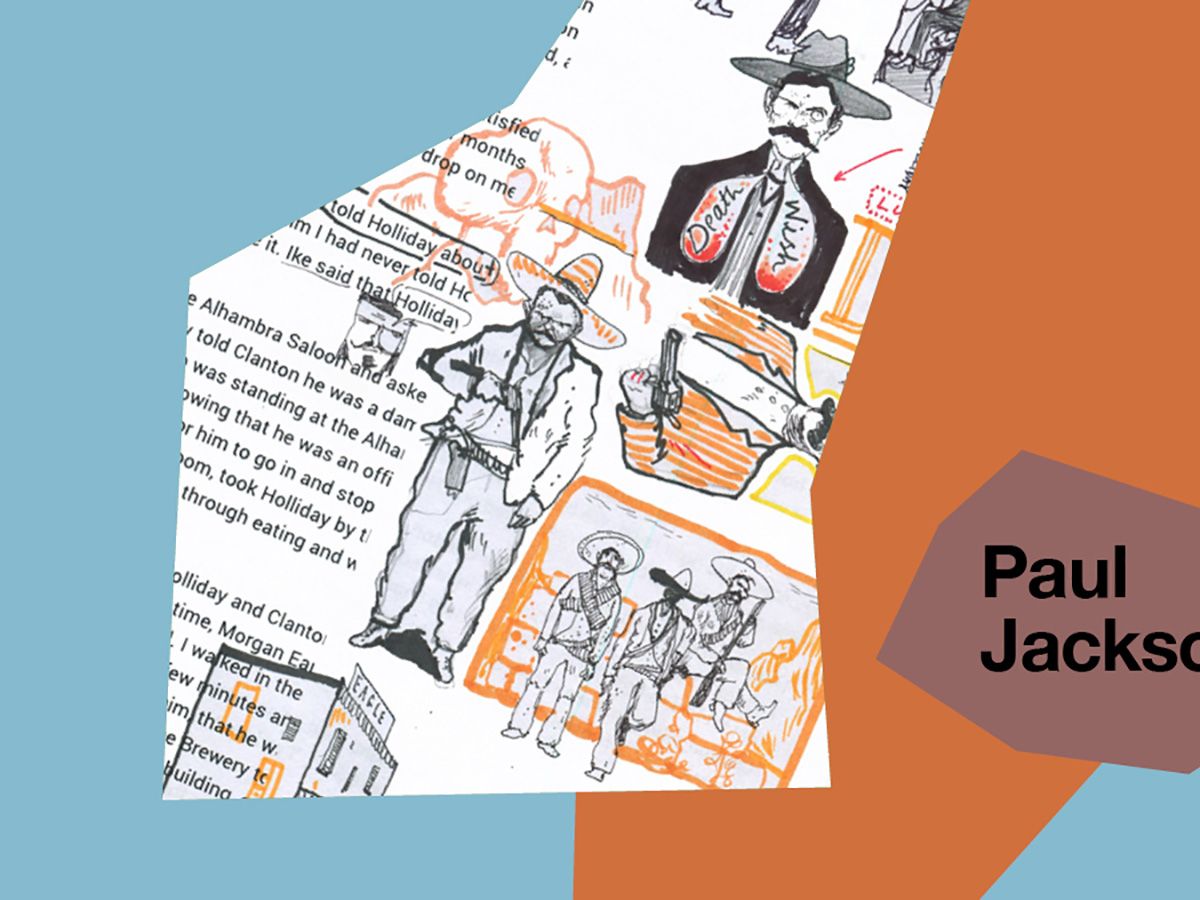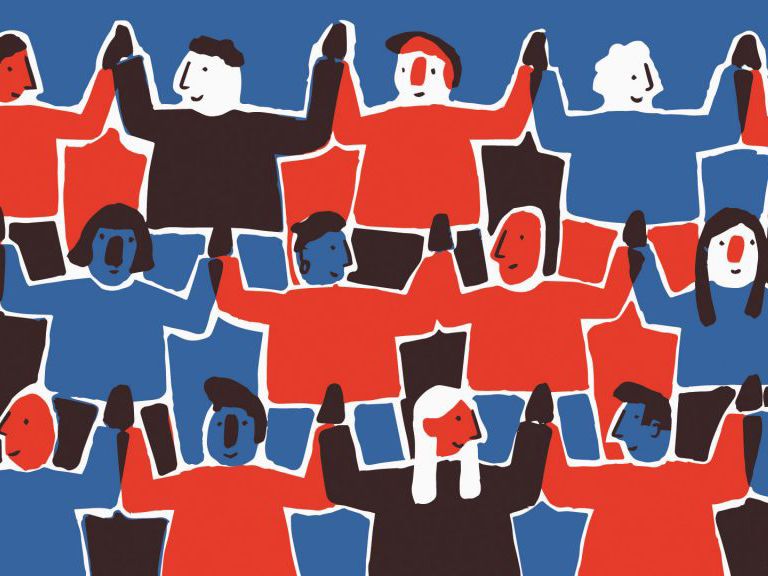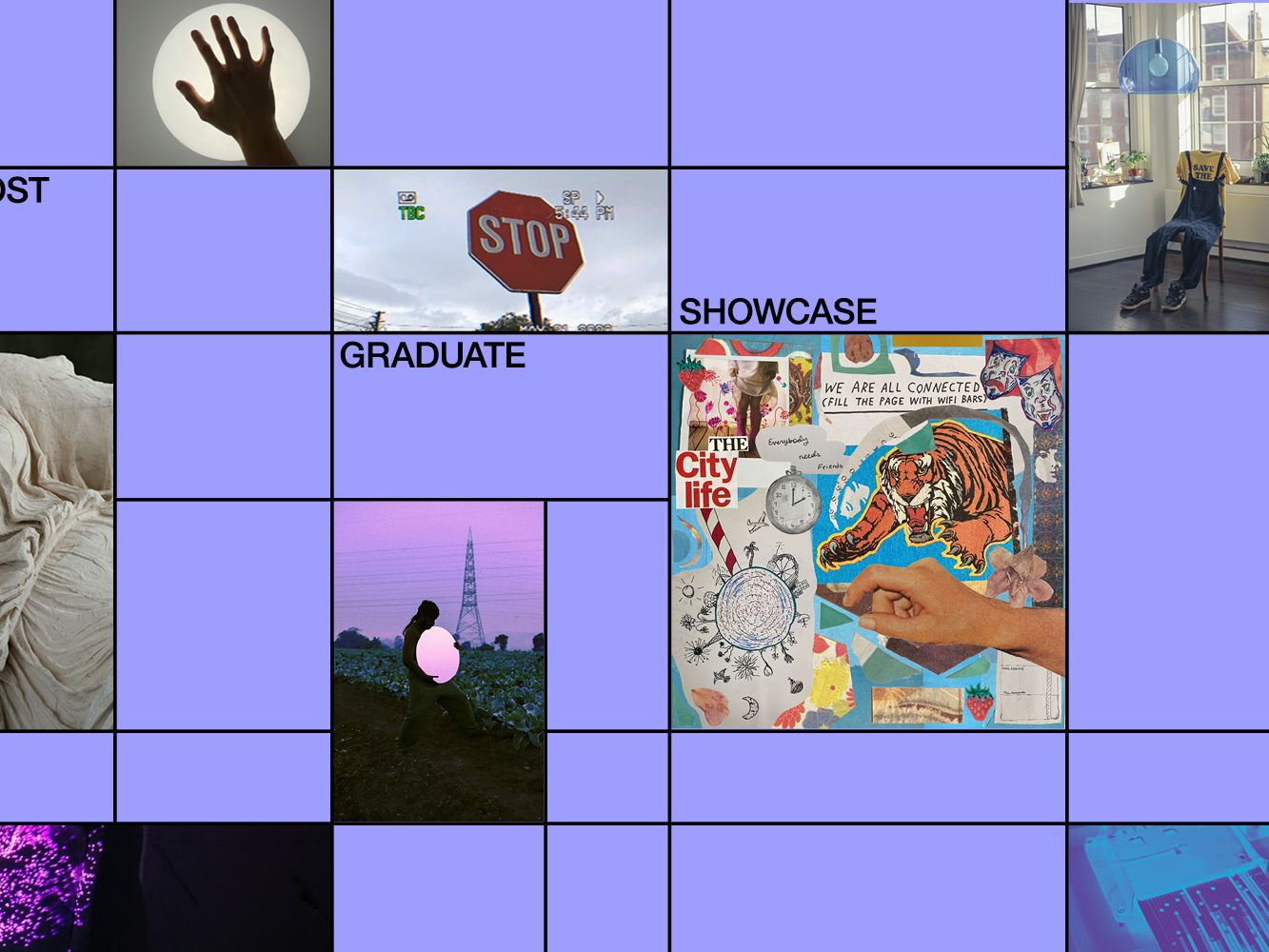Unfolding Narratives 2 is the second work-in-progress exhibition for PhD students at London College of Communication (LCC), and demonstrates a range of concepts, methods and forms across various stages of the doctoral academic journey.
Exploring areas as diverse as film, design, sculpture, illustration, photography and performance, the 2021 exhibition highlights the work and experiences of 7 PhD students at the College: Judah Attille, Paul Jackson, Elin Karlsson, April (Meichen) Lu, Boyi Sun (Betsy), Manuel Francisco Sousa, and Victoria Karlsson.
Featured projects have emerged from across LCC's Schools of Design, Media and Screen, alongside UAL’s Research Centres in Sound Arts (CRiSAP) and Photography (PARC). Together, they demonstrate crucial connections between conceptual thinking and creative practice through explorations of the body, culture, identity, narrative, gender, race, ethics, and the socio-cultural meaning of listening.
Mediating physical and digital worlds, Unfolding Narratives 2 offers a glimpse into the vibrancy of LCC's dynamic research community, which is also home to a further 40 students working towards their doctoral degrees.
An introduction from Professor Pratap Rughani
Doctoral work is vital to the role that research plays in the diverse and creative culture at London College of Communication. Many of our PhD students are successful artists and makers who come to the College to further deepen their knowledge and inquiry, and often teach other LCC students during their time here.
Their supervisory teams are experts in their fields who guide student journeys over many years to achieve the highest form of academic degree. These PhD journeys are themselves an unfolding and sometimes demanding voyage, calling for creative responses in making new work that combines academic rigour, insight, and vision.
LCC and UAL are international leaders in practice-based research as doctoral inquiry. Most of our PhD students are making art or media work alongside writing text, and their journeys result in the creation of work that makes a significant new contribution to knowledge in many forms ranging from film to design.
Throughout their PhD, students not only become specialists in their research subject, but also develop as researchers and experts within their respective practices and disciplines. In the texts accompanying their work, students reflect on their research, the process around it, and their experiences as a researcher.
Testing the work by inviting audiences to respond is essential to this process, especially during these challenging times. We very warmly welcome your thoughts and ideas about what the work means for you. We are delighted to both celebrate the emergence of this new work and develop more public engagement in our community and beyond.
Professor Pratap Rughani, Associate Dean of Research at London College of Communication

Judah Attille
Filmmaker Judah Attille is particularly interested in the substance of film, gender performativity, and relational intimacy. With methodologies stretching from movement training and somatic sensing to drawing, collage and anthropomorphic animation, her doctoral enquiry, Africandescence, involves research and experimentation in moving image production developed in response to Mayotte Capécia's 1948 novel, Je suis Martiniquaise.
Africandescence is a motion picture-based doctoral enquiry into narrative time and cinematic time. The field of this study explores British independent films scoped through the women’s rights movement, Black political thought, and the potential of formal avant-garde tropes in lighting, framing and editing to evoke intimacy. Its conclusion functions to expand the view of a contested ‘historical avant-garde’ in British film culture.
Charlotte (2021) is a photograph taken from a series of collages produced during COVID-19's ‘Lockdown II’. Created through playful enquiry, this series uses resources activated from my desk - paper, pens, ink, dolls, iPhone 6s, 2020-2021 editions of British Vogue, and Adobe Photoshop. It responds to the difficult research challenge of finding an abstraction to stand in for the vitality of female sexual agency in art – one of the central tenants underpinning the concept of Africandescence – while providing a sense of what is uncertain and personally unsettling, but impactful.
Key words: Africandescence, avant-garde, animation, British Vogue, collage, horse, Je suis Martiniquaise, Mayotte Capécia, anthropomorphism

Paul Jackson
Designer Paul Jackson considers the role of reading in relation to his illustration practice. With an interest in the cognitive processes between drawing and language, Paul’s doctoral work explores the literary theory of ‘storyworlds’ – or ‘global mental representations’ (David Herman, 2002) - and the ways in which readers form mental models of a story while illustrators search for opportunities to encode models of visual representation.
My work proposes that the act of storyworlding is manifested through processes of cognitive drawing; those that prefigure (and potentially inhabit) the illustration itself. While world-building develops a text outward into new territories and possibilities, the storyworld remains faithful to its source - it is the world of the story (Marie-Laure Ryan, 2014). Storyworlds depend on the methods of ‘reader-liness’ enabled by texts, and the approaches to visualising text that are taken by the illustrator.
The works in Trial Transcripts form a 7-page investigation of textual opportunities in a statement given by Wyatt Earp at his 1881 trial. By working in the margins of laserprint, I formalise a process that I regularly use in editorial illustration; printing out text, circling key words and making connections between nouns and verbs. I identify the potential of phrases such as “horse thieves” and “cattle thieves” to disrupt a conventional representation of these tropes within Earp’s narrative, where the word ‘horse’ does not become the object of the theft, but the perpetrator.
Key words: Illustration, storyworld, world, cognitive model, drawing, interface
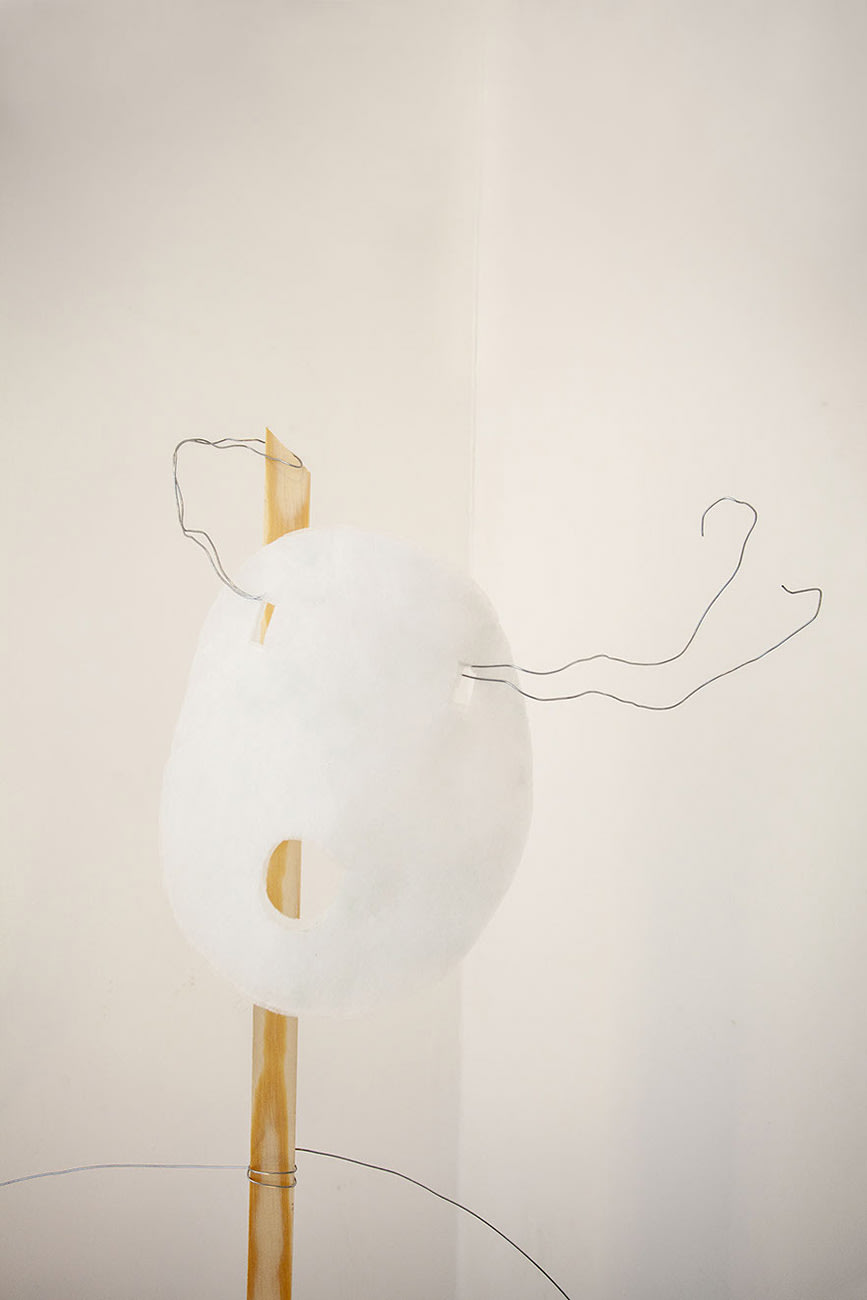
Elin Karlsson
Working across sculpture, installation and writing on 'the language of DIY', Elin Karlsson’s doctoral work enables her to author a sexuality - a process which centres on taking power, understanding banishment and reassembling the domestic to map out and rethink desire, domesticity and the very nature of sexuality itself.
My PhD thesis is, in sculpture and in writing, a manifestation of domestic space. Understanding the domestic as a complex set of exchanges between powerful imaginaries and ideals, it both impacts and mirrors sexuality - specifically female sexuality. These exchanges may take place within the home and between the people who live there, but are also made manifest in a capitalist exchange of the physical objects that make up a home itself.
In my research, I respond to an idealised version of the domestic, using writing and language that pushes against and challenges imagined ideals on a number of levels and ways. My work addresses both the academic institution and domestic environment from a place of exile, and from a non-hierarchical position.
Key words: DIY, lewdness, fiction, banishment, power, sculptural assemblage, domestic

April (Meichen) Lu
Artist, illustrator and graphic designer April (Meichen) Lu’s practice-based research aims to develop new insights by creating characters for graphic narratives that are inspired by female genitalia. Challenging both erotic and taboo stereotypes, her work also uses these characters to encourage emotional resonance with the experiences of other women.
I explore feminist thinking and the use of female genitalia across different fields including fine art, graphic narratives and illustration. I portray vulva characters as the main protagonists in my practice to further challenge the stereotypes and symbolic representation of female genitalia in graphic images, and to awaken the consciousness of female self-acceptance. My work also uses feedback on and interactions between autobiographical graphic narratives and female audiences to determine common issues in the individual understanding of our bodies.
In the second year of my PhD, I became inspired by memories of 'the menarche' (or first period). Opus Magnum for A Girl was born from a conversation with my aunt when I first menstruated. This work brings new colour principles to the application of symbols, develops genitalia characters based on alchemical ideas, and introduces the new medium of papercutting to my practice.
Key words: feminism, autobiography, graphic narratives
A strange truth hunting | Boyi Sun (Betsy)
Boyi Sun (Betsy)
The work of filmmaker Boyi Sun explores 'the ethnographicity of feeling' - the ways in which different cultures express and conceptualise emotions and experiences, with particular attention to its impact on film practice.
My research is essentially an exploration of a concept called 'Gan Jue’, which is rooted in Chinese culture. It refers to a way of making sense of the world through the body, as well as the experience produced in this process. Throughout history, Gan Jue has appeared as an essential element of practice methods that have influenced traditional art practices in China, and over time, its range of applications has been on a much larger scale.
When it comes to the field of film, Gan Jue can be frequently found as a term mentioned in the reviews of Chinese critics and by film practitioners. However, due to the difficulty of its textual translation, both the meaning of the concept and the ‘world’ unveiled by it has, lamentably, remained relatively obscured on an international level.
My research explores how Gan Jue can enrich the wider field of film. A strange truth hunting is work I created during the process of examining its presence in my own practice.
Key words: film, Gan Jue, Covid-19, filmmaker, truth-hunting
Manuel Francisco Sousa
Documentary photographer Manuel Francisco Sousa’s work offers poignant reflections on the relationship between image-maker and participant, and explores the ways in which ethical considerations can be made more visible within the field of photographic practice.
Nadezhda was the first person I met in Kryvyi Ryh. The time my interpreter and I spent with her did not always involve the presence of a camera, and neither did it always carry the expectation of a photograph. She talked to us for quite some time about her 2 sons. I was not quite expecting the account she gave and the very visible grief it entailed - she had lost them to homophobic violence. I remember becoming very self-aware of the camera in my hand. Of my posture. If I should simply put down the camera.
I pictured her holding photographs of her sons and their friends. She appears in the pictures, her gestures are seen and her voice is heard in the videos, but at the same time, her face in front of me is hidden from the shutter. Later, I took her portrait outside, in the empty playground in front of her home. I think this has been the encounter that questioned me the most in my position.
The object of my research is the encounter with the other within the practice of documentary photography. I shift the focus from the photograph as an image to photography as an event. I make a reversal of terms: from an ethics of visibility to a visibility of ethics. The reversed term addresses the voices which collide in the space and process of photography-making, in conflict or finding ways to collaborate.
Key words: ethics, documentary photography, photography as event, autoethnography
Sonic Contagion | Victoria Karlsson
Victoria Karlsson
Sound artist Victoria Karlsson explores both internal and external experiences to consider how we think about, remember and dream about sound. Based at UAL’s Creative Research into Sound Arts Practice (CRiSAP), her work focuses on the sounds we hear in our minds – ‘similar to, but different from, our inner voice’ - by invoking elements of performance, visual and text scores, installations and sculpture.
Sound can be dangerous – it penetrates, transgresses borders, infects, moves into, out of and between bodies and minds. In Sonic Contagion, I explore the body and mind as affected and infected by our own inner sounds and those of others – its movements and responses only partially within our control. The sonic virus controls us and wants to be passed onto others, negating our boundaries between inner and outer; between us and the other.
TeleSonic Transmission further builds on my practice and takes inspiration from Lisa Blackman’s Immaterial Bodies, which suggests that 'television was considered by psychic researchers to be an occult domestic medium that allowed clairvoyance to increase across distances.' By exploring sounds we hear as part of our inner world of thoughts, ideas and emotions, this work considers the possibility of a collective inner listening experience, and suggests that listening in this new digital space is a reaching out along electric pathways, through screens, into each other’s homes, into each other’s minds. The screen has become a listening gateway - an extension of my ears, my body - and connects us in an intertwined experience of listening across the space which separates us.
Key words: sound art, listening, performance, inner sounds
Related links:
- Find out more about Research at London College of Communication.
- Explore research degrees at LCC.
- Keep up-to-date with the latest research news on Twitter: @ResearchLCC.
